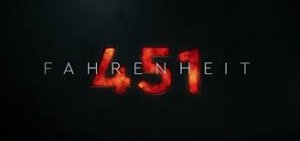The New English Bible. John, in English, in three volumes. Volume one. Embossed printing in Dr. Moon's type for the blind. [Biblia Braille. Bible in Moon alphabet for the blind].
Bijzonderheden
London, "Printed and published by the National Institute for the Blind (Moon Society Branch), Great Portland Street, London, W., England", 1962, vol.1 only (of 3), 70 leaves with embossed Moon-type text, contemporary (original?) simple boards lett...
Meer info
= Rare twentieth century reprint edition not listed in WorldCat of the first volume of three comprising the gospel of John - especially interesting for the use of Moons embossed type printing. First published by "Moon's Society for embossing & circulating English & foreign Books, maps, music, etc., for the blind" in Brighton, ca. 1850. Excellent example of a book employing William Moon's system of type, in which the letters of the alphabet are reduced to their simplest unique elements and then embossed on paper for touch-reading. Moon was a Brighton man who played a key role in improving literacy for blind and visually impaired people in the 19th century through the development of his embossed Moon alphabet. Born in 1818, William Moon lost sight in one eye at the age of four, after contracting scarlet fever. The sight in his other eye was also affected and it gradually deteriorated until, by the age of 21, he was totally blind. Moon had begun to familiarise himself with the embossed reading codes that were available in England in the 1830s. Before long, he assembled a group of blind or partially sighted pupils, which later evolved into a class within the Brighton Institution for the Deaf and Dumb in Egremont Place. After a number of years, and changes of address, a more permanent home for Moons teaching groups was found at the Asylum for the Blind in Eastern Road, which opened on 22 October 1861. The existing embossed reading systems were complex and Moon found them difficult for some of his pupils to grasp, particularly those whose hands were calloused and insensitive from manual labour. So he set about creating a simpler Moon alphabet based on modified Roman letters. This, he claimed, was so effective that, a lad who had in vain for five years endeavoured to learn by the other systems, could in ten days read easy sentences. Not content with teaching, Moon was also producing embossed books, including the Bible, at his home in Queens Road. In 1856, his friend and benefactor Sir Charles Lowther, who was also blind, laid the foundation stone for a printing press next-door. These premises were subsequently expanded and used for the production of not just text, but also illustrations and maps, giving those who were blind from birth a means to visualise things that they would never have seen. Queen Victorias portrait is said to have been a particular favourite. Books were also printed in foreign languages and sent to libraries around the world. Sir Charles Lowther himself took 2,000 volumes to New York for distribution across the US. Alongside this impressive enterprise, Moon developed Home Teaching Societies; these operated in the UK and Ireland as well as Australia, America and elsewhere, and involved trained teachers of Moons methods visiting the blind who were isolated in their own homes, and teaching them to read. The major problem for Moon's system was the sheer clumsiness of the publications, his edition of the Bible ran to 60 bulky folio volumes. Louis Braille had perfected his system for the French language in 1829, and in 1870 the publication of the first Braille work in English marked what seemed to be the beginning of the end for Moon script, although publications continued. However, there was a considerable rise of interest in the system in the 1990s, as technological solutions were found for the problems of unwieldiness and it is now seen as an excellent alternative for those who lose their sight having already learnt to read. Publications in Moon-type are rarely encountered, as their bulkiness, and the period of relative abeyance in Moon training has meant that they were largely discarded.

